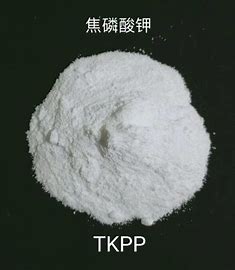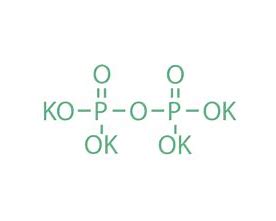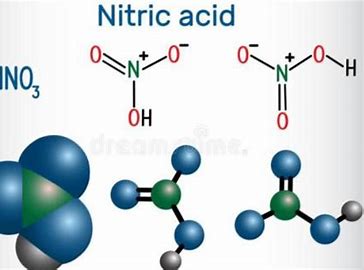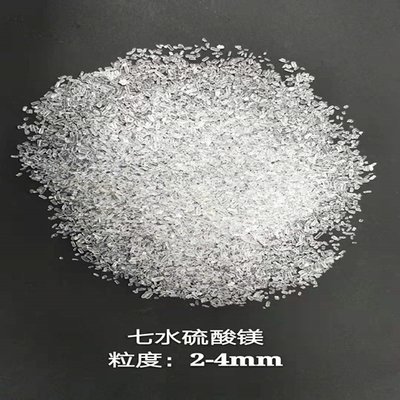where can i buy sodium bisulfite NaHSO₃
Understanding Sodium Bisulfite (NaHSO₃): What It Is and Why You Need It
Let’s start with the basics. Sodium bisulfite, with the chemical formula NaHSO₃, is an inorganic salt.
Its widespread utility stems primarily from its potent properties as a reducing agent and a ready source of sulfur dioxide. These characteristics make it invaluable in a surprising number of applications:
- Food Preservative (E222): This is one of its most common and recognized uses. Sodium bisulfite effectively prevents enzymatic browning in fresh and processed fruits and vegetables. It also acts as a powerful antioxidant and antimicrobial agent in many processed foods and beverages, including canned goods, wine, and beer, helping to maintain their color, flavor, and shelf life.
- Water Treatment: It’s widely employed as a dechlorinating agent to neutralize residual chlorine from drinking water, wastewater, and various industrial process waters. This prevents oxidative corrosion in plumbing and equipment. Furthermore, it functions as an efficient oxygen scavenger in boiler systems, protecting against corrosion.
- Pulp and Paper Industry: In this sector, NaHSO₃ is used as a bleaching agent and plays a role in various stages of paper manufacturing to improve quality and brightness.
- Textile Industry: Here, it serves as an “antichlor,” removing excess chlorine from fabrics after bleaching processes, preventing damage to the fibers.
- Photography: For photographic enthusiasts, it’s a component in some traditional photographic developers.
- Chemical Synthesis: In laboratory and industrial settings, it’s a go-to reducing agent for a variety of organic synthesis reactions.
Given this impressive range of uses, the demand for sodium bisulfite comes from incredibly diverse sectors, which directly influences where and how you can purchase it.
Where to Buy Sodium Bisulfite: Your Purchase Options
The best place to buy sodium bisulfite isn’t a one-size-fits-all answer. It largely depends on how much you need, the specific purity or grade required, and your intended application.
1. Online Chemical Suppliers (Recommended for Various Quantities and Grades)
For most people, online chemical suppliers offer the widest selection and best reliability. They provide sodium bisulfite in a range of quantities, from small laboratory packs of grams to bulk kilograms, and across various grades (reagent, food grade, lab grade, technical). These are generally the most trustworthy sources for ensuring product purity and receiving proper, secure packaging.
- Specialty Chemical Distributors: Companies like Carolina Biological, Lab Alley, Spectrum Chemical, Fisher Scientific, and Sigma-Aldrich are excellent choices. They primarily cater to educational institutions, research laboratories, and industrial clients, but many also serve individuals. They provide detailed product specifications, comprehensive Safety Data Sheets (SDS), and offer various purity levels, ensuring you get exactly what you need.
- E-commerce Marketplaces for Chemicals: While you might find smaller quantities listed on broader platforms like Amazon, often from third-party sellers, exercise caution. It’s crucial to verify the seller’s reputation and ensure the product clearly states its grade and provides an SDS. For peace of mind, sticking to dedicated chemical supply websites is usually the safer bet.
- Bulk Industrial Suppliers: If you’re a business with large-scale industrial needs—think drums, intermediate bulk containers (IBC totes), or even bulk tanker deliveries—you’ll need to look for specialized companies. Names like Chemtrade, Hydrite Chemical Co., Hawkins, Inc. Many of these operate through direct sales teams or a network of distribution partners.
2. Local Retailers (Limited Options, Primarily for Niche Uses)
Finding sodium bisulfite in general local retail stores can be quite challenging, as it’s not a common household item you’d pick up at the grocery store. However, you might find it in specific niche stores:
- Homebrewing or Winemaking Supply Stores: This is probably your best local bet for small quantities. Sodium bisulfite (often sold directly or in the form of Campden tablets, which contain potassium metabisulfite that releases sulfur dioxide upon contact with water) is a common sanitizing agent for equipment and a crucial preservative to prevent oxidation in homemade wine and beer.
- Pool Supply Stores: While less common than other pool chemicals, some specialized pool supply stores might carry products containing or related to sodium bisulfite for specific water treatment needs, such as dechlorination. A critical note: sodium bisulfate (NaHSO₄), a common pool chemical used to lower pH, is different from sodium bisulfite (NaHSO₃). Don’t confuse them!
- Specialty Craft Stores: In rare instances, stores catering to very specific crafts like traditional darkroom photography or certain dyeing techniques might stock it, but this is increasingly rare.
3. Agricultural and Water Treatment Suppliers
For those in agricultural sectors or municipal water treatment operations, specialized suppliers are the go-to source:
- Agricultural Chemical Suppliers: Depending on local regulations and specific agricultural practices, sodium bisulfite may be available for certain crop treatments or soil amendments.
- Water Treatment Chemical Distributors: Companies that focus specifically on municipal or industrial water treatment will have a ready supply of sodium bisulfite in various forms (liquid solutions or powder) for large-scale dechlorination and oxygen scavenger applications.
Important Considerations When Buying Sodium Bisulfite
Before you finalize your purchase, keep these crucial factors at the forefront of your decision-making process:
- Grade and Purity: This is paramount, especially if you’re dealing with sensitive applications.
- Food Grade: Absolutely essential if you intend to use sodium bisulfite as a food additive, preservative, or for winemaking/brewing. It must meet stringent purity standards. Look for explicit labeling such as “FCC” (Food Chemicals Codex) or the European food additive number “E222.”
- Lab Grade/Reagent Grade: These grades are suitable for laboratory experiments, analytical chemistry, or educational purposes. They come with defined purity levels that are appropriate for precise scientific work.
- Technical Grade/Industrial Grade: Generally less pure, this grade is used for large-scale industrial applications where minute impurities are not a critical concern, but cost-effectiveness is.
- Formulation: Sodium bisulfite is available as a powder or granular solid, or as a liquid solution (typically a 38-40% concentration). Your specific application will dictate which form is more convenient, safer, and effective for your needs.
- Quantity: Suppliers cater to different scales.
- Safety Data Sheets (SDS): Always, without exception, request and thoroughly review the Safety Data Sheet (SDS) for any sodium bisulfite product you consider purchasing. This vital document provides comprehensive information on proper handling, storage, first aid measures, potential hazards, and environmentally sound disposal procedures.
- Regulations and Shipping: Be aware of any local, state, or national regulations regarding the purchase, storage, and transport of chemicals. Shipping hazardous materials like sodium bisulfite can sometimes involve specific carriers, special labeling, and additional shipping fees.
Safety Precautions for Handling Sodium Bisulfite
Sodium bisulfite is a powerful chemical that demands rigorous safety precautions. It can pose significant health risks if not handled correctly:
- Inhalation Hazards: Inhaling sodium bisulfite dust or the sulfur dioxide gas it releases can cause severe respiratory irritation, leading to coughing, wheezing, and shortness of breath. For individuals with respiratory sensitivities, particularly asthmatics, exposure can trigger severe allergic reactions or life-threatening asthma attacks.
- Skin and Eye Contact: It is corrosive upon contact and can cause severe chemical burns to the skin and serious, irreversible damage to the eyes.
- Ingestion: Ingestion of sodium bisulfite is harmful and can cause irritation or damage to the digestive tract.
- Hazardous Gas Release: A critical danger point: when sodium bisulfite comes into contact with acids or is exposed to strong heat, it can rapidly release highly toxic sulfur dioxide (SO2) gas, which is a respiratory irritant and can be fatal in high concentrations.
- Personal Protective Equipment (PPE): Always wear appropriate Personal Protective Equipment (PPE). This includes chemical-resistant gloves (e.g., nitrile or neoprene), comprehensive eye protection (such as safety glasses, chemical splash goggles, or a full face shield), and protective clothing (like a laboratory coat or apron).
- Ventilation: Always handle sodium bisulfite in a well-ventilated area.
- Storage: Store sodium bisulfite in a cool, dry place, strictly away from incompatible materials (especially acids) and moisture.
Conclusion: Finding Your Source for Sodium Bisulfite with Confidence
The question “where can I buy sodium bisulfite?” might initially seem straightforward, but the answer truly involves a nuanced understanding of its various forms, grades, and specific applications. For large-scale industrial applications or highly specialized uses, establishing direct contact with bulk chemical manufacturers and distributors will be essential.
Regardless of your chosen source, always prioritize safety above all else. Thoroughly understand the product’s properties by consulting its SDS, and meticulously adhere to all recommended handling and storage procedures. By doing so, you can effectively and safely integrate sodium bisulfite into your specific needs.
Frequently Asked Questions (FAQ)
- Is sodium bisulfite the same as sodium bisulfate? No, absolutely not. They are distinct chemical compounds with different properties and uses. Sodium bisulfite (NaHSO₃) is primarily a reducing agent and a preservative, often used for dechlorination or in food. Sodium bisulfate (NaHSO₄), on the other hand, is an acidic salt commonly used as a pH reducer (e.g., in swimming pool chemicals). Always double-check the exact spelling and chemical formula.
- Can I buy food-grade sodium bisulfite for home canning or winemaking? Yes, you certainly can! Food-grade sodium bisulfite (often identified by the European food additive number E222 or as FCC grade) is specifically produced for these purposes. When purchasing for food-related applications, always ensure the product is explicitly designated as food grade to meet safety and purity standards.
- What’s the key difference between powdered and liquid sodium bisulfite? The powder or granular form is a solid, ideal for applications requiring precise dry dosing or incorporation into solid mixtures. Liquid solutions (typically 38-40% concentration) offer convenience for applications requiring easy dispensing, immediate dissolution, or continuous feeding, such as in large-scale water treatment systems.
- Is sodium bisulfite dangerous to handle? Yes, sodium bisulfite requires careful handling. It is corrosive to skin and eyes, and inhaling its dust or the sulfur dioxide gas it releases (especially when mixed with acids) can cause severe respiratory irritation or even trigger allergic reactions in sensitive individuals. Always follow safety guidelines, including wearing appropriate PPE and ensuring good ventilation.
- Where can I find the SDS for sodium bisulfite? Any reputable chemical supplier should provide a Safety Data Sheet (SDS) readily available on their product pages online, or they should be able to furnish one upon request. It is absolutely crucial to review this document thoroughly before you handle the chemical.
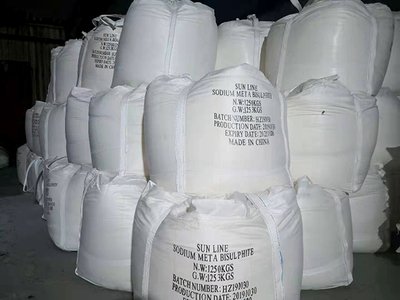
yuhan chem canbuy sodium bisulfite:https://www.yuhanchemi.com/sodium-bisulfite
Contact us:https://www.yuhanchemi.com/contact

